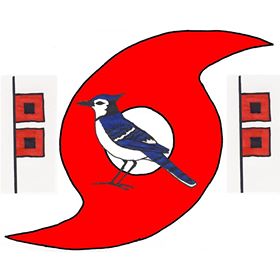Tropical Storm Raymond moved west of Mexico on Friday afternoon. At 5:00 p.m. EDT on Friday the center of Tropical Storm Raymond was located at latitude 19.1°N and longitude 106.5°W which put the center about 145 miles (230 km) west of Manzanillo, Mexico. Raymond was moving toward the northwest at 17 m.p.h. (28 km/h). The maximum sustained wind speed was 50 m.p.h. (80 km/h) and there were wind gusts to 65 m.p.h. (105 km/h). The minimum surface pressure was 1000 mb.
A Tropical Storm Warning was in effect for the portion of the coast from Manzanillo to Cabo Corrientes, Mexico. A Tropical Storm Warning was in effect for Las Islas Marias. A Tropical Storm Warning was in effect for the portion of the coast from Los Barriles to Santa Fe, Mexico.
The distribution of thunderstorms in Tropical Storm Raymond was still asymmetrical on Friday afternoon. Thunderstorms were occurring in bands in the southern and western parts of Raymond’s circulation. Bands in the northern and eastern parts of Tropical Storm Raymond consisted primarily of shower and lower clouds. Storms near the center of Raymond generated some upper level divergence that pumped mass away to the west of the tropical storm.
The circulation around Tropical Storm Raymond was small. Winds to tropical storm force extended out 80 miles (130 km) from the center of Raymond’s circulation.
Tropical Storm Raymond will move through an environment that will be only marginally favorable for intensification during the next 24 hours. Raymond will move over water where the Sea Surface Temperatures are near 28°C. It will move under the southwestern part of an upper level ridge that is over Mexico. The upper level ridge will produce easterly winds that will blow toward the top of Raymond’s circulation. Those winds will cause strong vertical wind shear. The strong wind shear will inhibit intensification. Tropical Storm Raymond is likely to weaken on Saturday because of the strong vertical wind shear.
Tropical Storm Raymond will move around the western side of a high pressure system that is over Mexico. The high pressure system will steer Raymond toward the northwest during the next 24 hours. On its anticipated track, Tropical Storm Raymond will reach the southern end of Baja California on Saturday.
Tropical Storm Raymond will bring gust winds and locally heavy rain to the southern part of Baja California. Heavy rain could cause flash floods in some locations.
Elsewhere over the Eastern North Pacific Ocean, former Tropical Storm Priscilla weakened west of Baja California. At 5:00 p.m. EDT on Friday the center of Tropical Depression Priscilla was located at latitude 26.3°N and longitude 115.4°W which put the center about 220 miles (355 km) west-northwest of Cabo San Lazaro, Mexico. Priscilla was moving toward the north at 6 m.p.h. (10 km/h). The maximum sustained wind speed was 35 m.p.h. (55 km/h) and there were wind gusts to 45 m.p.h. (75 km/h). The minimum surface pressure was 1004 mb.
